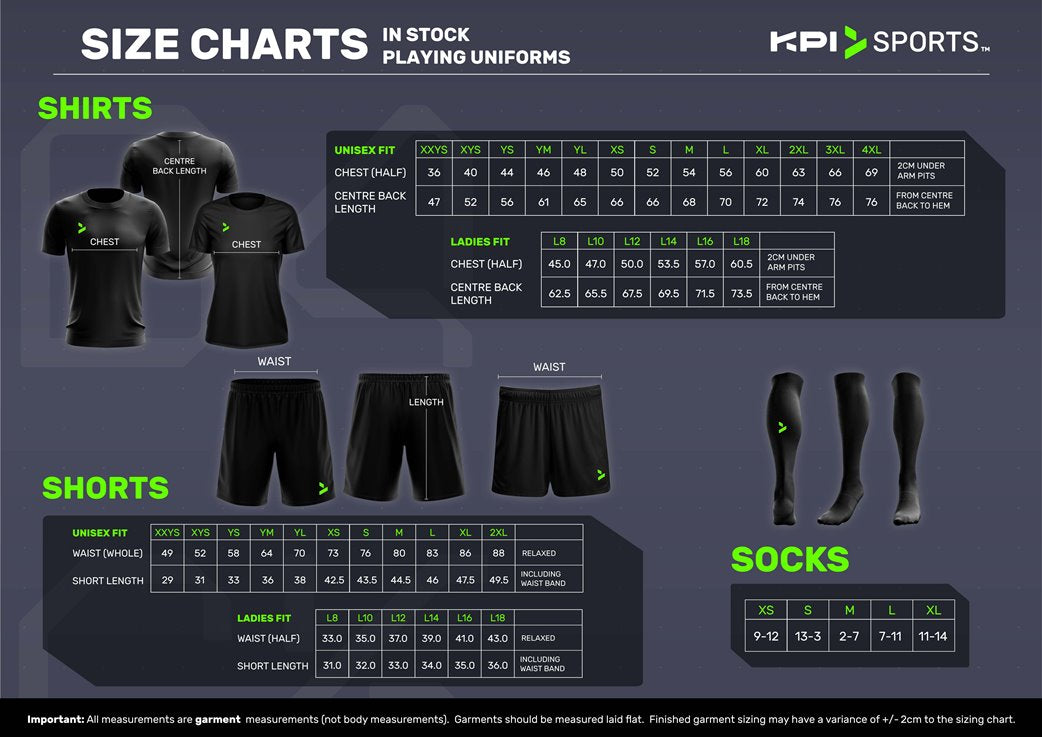Understanding Fabric Weight: How Does GSM Impact Breathability and Performance in Sports Clothing?

If you are purchasing sports uniforms for a sports club or school, you know your players and athletes need sportswear that feels light, breathable, and moves freely. But have you ever wondered how to ask your uniform supplier questions about what exactly makes a fabric ideal for peak performance? An important part of the answer lies in a seemingly simple metric: fabric weight.
Fabric weight is typically measured in grams per square meter (GSM). Knowing the GSM of a fabric can tell you a lot about its thickness, breathability, and overall suitability for different activities. So, how exactly does GSM impact your sports uniforms and what should you be looking for?
The GSM Spectrum:
- Ultralight Fabrics (30-80 GSM): These featherweight fabrics are perfect for high-intensity activities where breathability is paramount. They dry quickly and offer a barely-there feel, ideal for running, cycling, and hot weather workouts. However, their thinness does make them less durable and potentially see-through in certain light conditions, meaning that they are best suited as a component in a garment, like a side or back panel that maximises breathability without compromising privacy
- Lightweight Fabrics (80-130 GSM): Like the Ultralight category, Lightweight Fabrics are mainly suitable high intensity activities, like long distance running and hot weather sports. They can be whole-of-garment fabrics but at KPI Sports we typically use them in panelling to provide breathability without compromising durability.
- Midweight Fabrics (130-180 GSM): As the GSM increases, fabrics become more durable while still being comfortable for high intensity sports. Midweight fabrics provide a good combination of breathability, durability and structure. The most common weight of fabrics we use for team sports at KPI Sports is 140-160 GSM, this is for sports like soccer, athletics, netball, cricket shirts and basketball. It is less suitable for high contact sports like rugby and AFL but is good for training shirts for these sports.
- Heavyweight Fabrics (180+ GSM): These thick fabrics prioritize warmth or durability. They're perfect for contact sports like rugby and AFL, as well as cold-weather sports and activities requiring extra protection or strength, like cricket pants and mountain biking.
The Breathability Factor:
Breathability is a crucial factor in sports clothing. It dictates how well sweat vapor can escape the body, keeping you cool and dry during exercise. Generally, lighter weight fabrics (lower GSM) tend to be more breathable. They have a looser weave that allows for better air circulation and moisture wicking.
However, breathability isn't the only story. Some heavier fabrics use advanced technologies to enhance moisture management. For example, midweight fabrics are often be treated with a moisture wicking finish that allows sweat vapor to escape while blocking external moisture, keeping you dry regardless of the environment.
Beyond Breathability: Considerations for Different Activities:
Breathability is important, but other factors come into play depending on your specific activity:
- Warmth: For cold-weather activities, a higher GSM fabric will provide more insulation to keep you warm.
- Durability: Heavier weight fabrics are generally more durable and resistant to wear and tear, ideal for activities with a higher risk of abrasion (e.g. contact sports).
- Compression: Some midweight fabrics might have compression properties, which can offer muscle support and improve circulation during exercise.
Choosing the Right Fabric Weight for You:
There’s no one-size-fits-all answer when it comes to fabric weight, but there are good rules-of-thumb that apply to most sports. The ideal GSM for your sports or activity depends on several factors, including:
- Activity Level: High-intensity/low-contact sports call for lightweight, breathable fabrics, while contact sports and very cold-weather environments require heavier, insulating options.
- Climate: Consider the temperature and weather conditions you'll be training and playing in.
- Personal Preference: Some athletes prefer a looser, lighter feel, while others might favor a more compressive fit. You can’t please everyone when it comes to whole-of-club or school purchasing, but it is always useful to get feedback from players on how they feel about their current or previous uniforms.
The Final Word:
Understanding fabric weight (GSM) will help you to make informed choices when selecting sportswear and talking to your club or school uniform supplier. Next time you are looking for a new team uniform, make sure you ask the supplier about the GSM of their products. Good uniform suppliers will be able to tell you about the GSM of their fabrics, what your options are, and the pros and cons of different fabric weights and styles.
TAGS:






